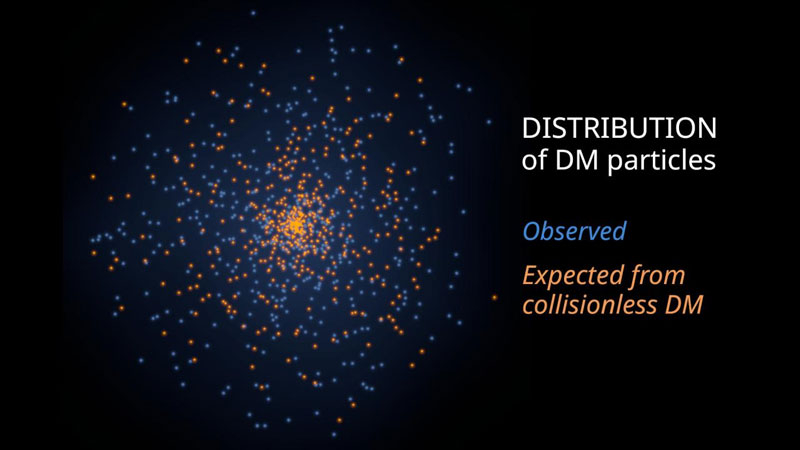New work by an international team of astronomers has led to a sensational conclusion: science until now had a fundamentally incorrect understanding of the nature of dark matter. Most models of dark matter assume that it interacts with ordinary matter only within the limits of gravity. Observations of six ultra-compact dwarf galaxies not far from us have shown that dark matter still somehow affects matter.

Simulation of the distribution of dark and ordinary matter. Image Source: TNG Collaboration
Ordinary matter can also be invisible in space. The peculiarity of dark matter is that it does not interact with electromagnetic radiation in any way: it does not absorb, reflect or scatter it. Therefore, dark matter cannot be detected in any range accessible to terrestrial science. Only the gravity of large clouds of dark matter helps to suspect its presence in space – it refracts light passing nearby, like a lens.
But for the evolution of the Universe, galaxies and the rest of the material world, dark matter is necessary, like air to a person. During the infancy of the Universe, it initiated the concentration of matter and contributed to the birth of first stars and then galaxies. Dark matter is present everywhere, but this does not make it easily detectable. However, now there is a chance to look more carefully. The new observation suggests that dark matter interacts with ordinary matter in some way other than gravity.
Scientists have conducted a detailed survey of six ultra-compact dwarf galaxies neighboring the Milky Way. Since the mass of these galaxies was clearly greater than the mass of the stars found in them, this indicated the presence of dark matter in them. The idea was that the arrangement of stars in galaxies would differ depending on whether they interact with dark matter only through gravity or also in some other way unknown to us.

The difference in the distribution of stars throughout the galaxy in the case of observation (indicated in blue) and if dark matter had no effect on the matter other than gravity (in orange)
If dark matter affected stars solely through gravity, some stars would gather in the center of galaxies in a dense group, and significant rarefaction would be observed at the periphery. However, if dark matter and ordinary matter had additional influence on each other, the stars would be distributed more evenly throughout the galactic disk. In this case, something could prevent them from accumulating closer to the center. Observations of real galaxies have shown that the stars are distributed evenly across the galaxies. In other words, dark matter affects ordinary matter not only through gravitational attraction.
This discovery provides the basis for developing experiments to detect other types of interaction between dark and ordinary matter, in addition to gravity. It is possible that previously this possibility was not seriously considered by the majority of scientists, and only enthusiasts worked in this direction. Now there is an intrigue that can kindle the interest of the scientific community in searching for answers to the mysteries of dark matter in a new direction.